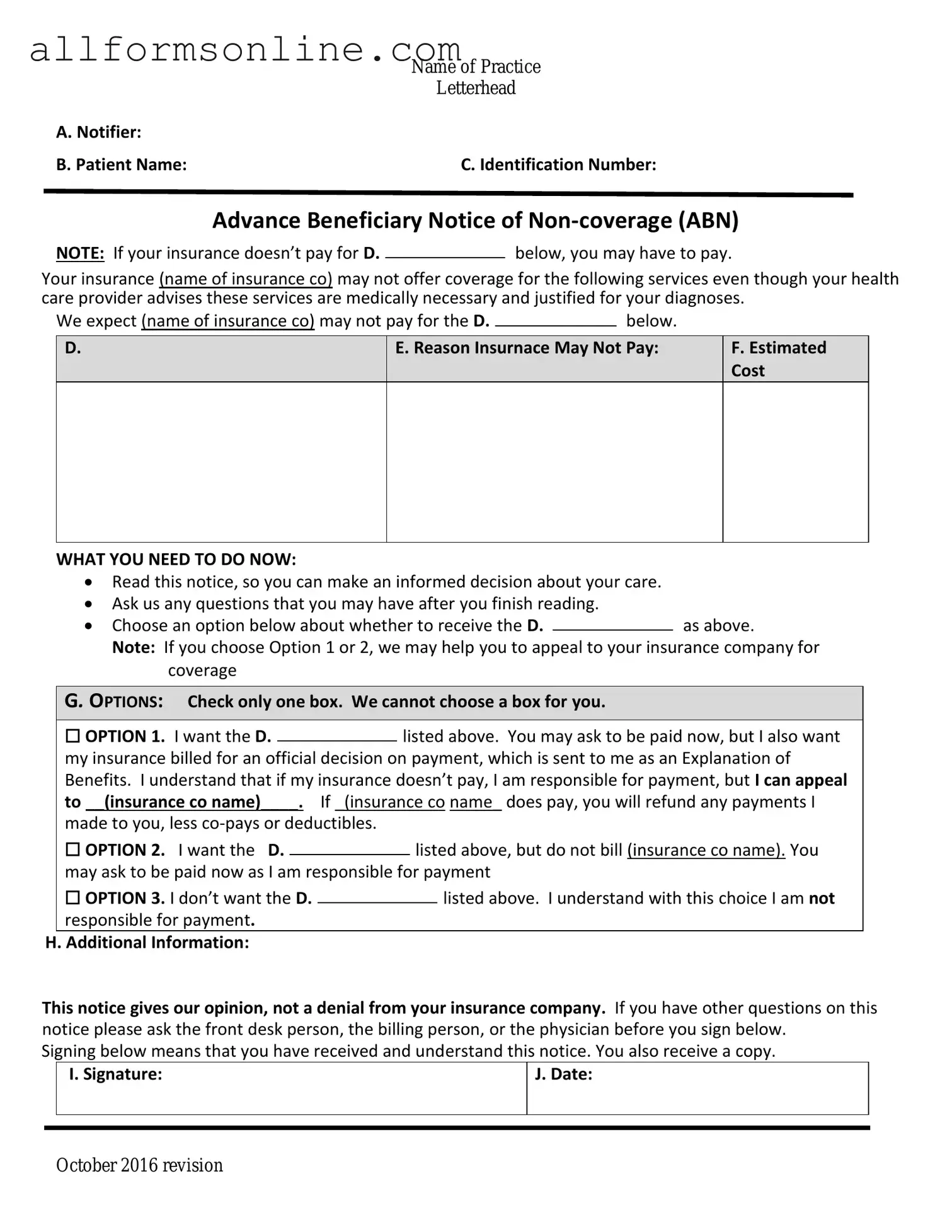Free Advance Beneficiary Notice of Non-coverage PDF Form
The Advance Beneficiary Notice of Non-coverage (ABN) form is a notification that informs Medicare beneficiaries that a service or item may not be covered by Medicare. This form helps patients understand their financial responsibilities before receiving care. For more information on how to fill out the ABN, click the button below.
Fill Out Your Form Now
